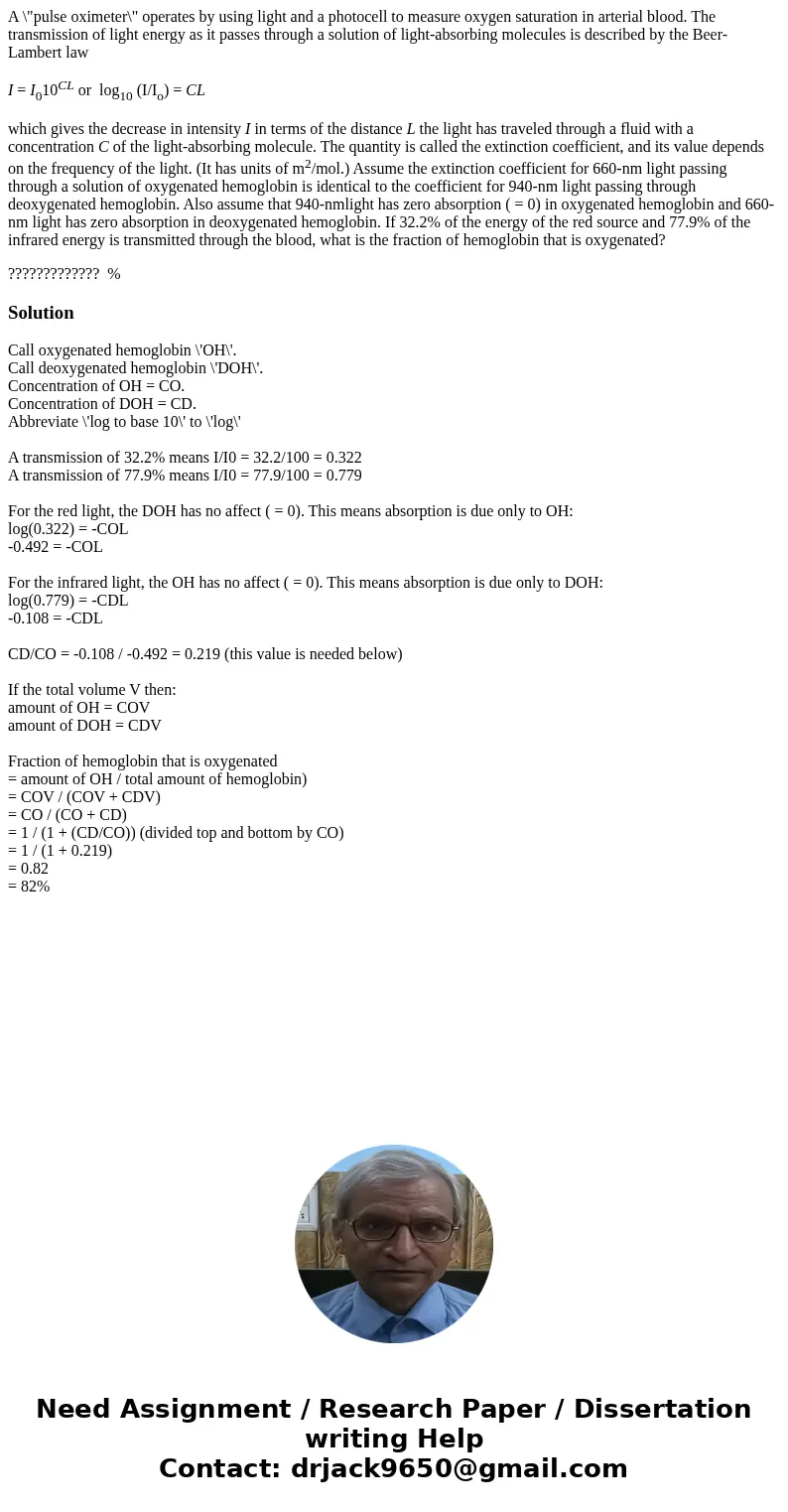A pulse oximeter operates by using light and a photocell to
A \"pulse oximeter\" operates by using light and a photocell to measure oxygen saturation in arterial blood. The transmission of light energy as it passes through a solution of light-absorbing molecules is described by the Beer-Lambert law
I = I010CL or log10 (I/Io) = CL
which gives the decrease in intensity I in terms of the distance L the light has traveled through a fluid with a concentration C of the light-absorbing molecule. The quantity is called the extinction coefficient, and its value depends on the frequency of the light. (It has units of m2/mol.) Assume the extinction coefficient for 660-nm light passing through a solution of oxygenated hemoglobin is identical to the coefficient for 940-nm light passing through deoxygenated hemoglobin. Also assume that 940-nmlight has zero absorption ( = 0) in oxygenated hemoglobin and 660-nm light has zero absorption in deoxygenated hemoglobin. If 32.2% of the energy of the red source and 77.9% of the infrared energy is transmitted through the blood, what is the fraction of hemoglobin that is oxygenated?
????????????? %
Solution
Call oxygenated hemoglobin \'OH\'.
Call deoxygenated hemoglobin \'DOH\'.
Concentration of OH = CO.
Concentration of DOH = CD.
Abbreviate \'log to base 10\' to \'log\'
A transmission of 32.2% means I/I0 = 32.2/100 = 0.322
A transmission of 77.9% means I/I0 = 77.9/100 = 0.779
For the red light, the DOH has no affect ( = 0). This means absorption is due only to OH:
log(0.322) = -COL
-0.492 = -COL
For the infrared light, the OH has no affect ( = 0). This means absorption is due only to DOH:
log(0.779) = -CDL
-0.108 = -CDL
CD/CO = -0.108 / -0.492 = 0.219 (this value is needed below)
If the total volume V then:
amount of OH = COV
amount of DOH = CDV
Fraction of hemoglobin that is oxygenated
= amount of OH / total amount of hemoglobin)
= COV / (COV + CDV)
= CO / (CO + CD)
= 1 / (1 + (CD/CO)) (divided top and bottom by CO)
= 1 / (1 + 0.219)
= 0.82
= 82%

 Homework Sourse
Homework Sourse